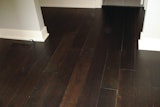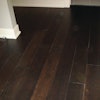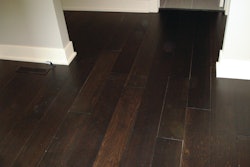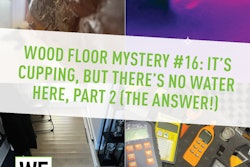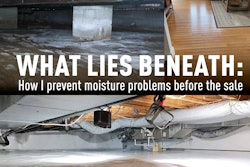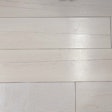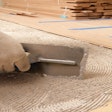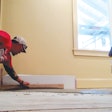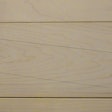
One of the most common complaints floor pros receive involves cupping. When a wood floor is no longer flat, heads will roll. We all know the ONLY thing that makes wood distort is an increase or decrease in moisture content beyond its equilibrium state. The simple fact: If a solid floor is cupped, we look for water (moisture). If it’s an engineered wood floor, maybe it’s dry-cupping (a loss in moisture).
A typical cupping scenario: The confident homeowner, contractor, or builder tells you, “Please don’t tell me it’s water. We read all that online, but there is no water here.”
You attempt to plead politely and respectfully, “Please check closely. Any leaky pipes, ice dams, damp basements, leaky refrigerator, defrosting ice maker, sweaty toilet tank?” Nope. And they demand an inspection. So off we go.
Folks say stuff, like: “We were sold crap flooring,” “We got ‘green lumber,’” or “We paid a lot of money, this is unacceptable.” You can certainly understand their frustration. They likely spent a small fortune on their floors. They raved about them to all their relatives and neighbors. And now they look like a nightmare. We get it, we really do. The installer doesn’t want to see all their hard work looking like this, either, and they don’t want their reputation in dispute.
One of my favorite movies and classic lines is from “My Cousin Vinny.” I alter it a bit and say it (to myself) in these situations: “I’m sorry, did you say there’s no water here? Do the laws of physics CEASE to exist on your floors?!”
RELATED: Wood Floor Cupping: Why Does it Happen & What Can You Do?
I received one of these calls, and an extremely seasoned and familiar contractor asked me to look at some cupped floors. He told me, “I know it’s water. You know it’s water. There is no water. We looked everywhere, and nothing makes sense.”
OK, time to go find the water … or not. Guess what? I didn’t find any, either. Weird, huh? Here was the issue:
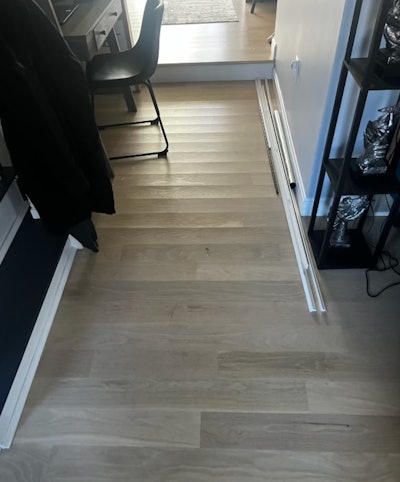
Notice in the pic that area is about 18” wide; it runs straight from the front of the house to the back. The cupping fades left and right of this area. It runs from the front door up to a riser and continues straight to a doggie door in the rear sliding door. The only damp, detectable area is 47” from that sliding door in the middle of that “path.”
Here’s more info:
- 4” white oak solid ¾”, plainsawn, over ¾” plywood.
- Joists front to back (standard issue) with the flooring installed perpendicular (left/right when facing the home).
- From the kitchen slider (there’s an attached outdoor deck) through the dining room and down the hall the flooring was not only cupped, it was gapped, as well.
- The home was an older 1960s-ish ranch. It was small, with a finished basement, and it smelled a bit musty.
- The brand-new kitchen remodel included the oak flooring throughout (maybe 800–900 square feet total).
- The cupping and gapping dissipated as the floor went into the kitchen and the front living room.
- The issue seemed to make a straight line from the back slider to the front door.
- The flooring had the classic “railroad track” look since the floor did run left to right (see photo).
- I took photos with a thermal imaging camera, and you can see the heat signatures:

- I expected to find a damaged water line behind the unit, but that would have showed up cold under infrared.
- The room measured 22–24% RH (it was winter). The temperature was approximately 68° F.
- The flooring measured 6.6–9.4% MC throughout:

- The installation space measured 40” at 10 rows, so the floor pro did their job right.
However, the plot thickened: Just off the left corner of the fridge and 47” from the slider, my meter would climb from 7% to 10% MC! Also, tapering away from one spot, the floor was 3–4% drier in the top ¼” compared with the lower ¾”—but only in this one spot. Even 10% MC isn’t that brutal, but why the big jump only in one small area and nowhere else?!
The flooring measured 68-70° F. But just off the screen there was an area that measured only 63° F from “The Spot” to the slider. This area measured much colder, but not particularly wetter (not enough to cup the floor, I thought).
I asked if the floors had looked any better or worse at any given time. I was told that yes, the flooring seemed to change from time to time, but “mostly from the slider, up the hall, and to the front door.”
Final notes: No broken pipes. No ice dams. No naughty pets. No water on the basement floor. The plywood was spotless in the basement when I pulled the fiberglass insulation and drop ceiling tiles. One area of tile was stained about 4 feet from the rear wall, but it was dry. The entire basement was warm and dry. No radiant heat tubes … nothing. It appeared to me that the floor had been swelling and shrinking, swelling and shrinking … what the heck would cause a floor to cycle like that? You tell me!
That’s all I had to work with. I will let you readers put it all together (leave your ideas in the comments!) while I go back to my unsolved Mystery #15 and see what you all came up with.
I’ll let you know what I found in Part 2.
See all of Stephen Diggin's popular blog posts and magazine articles here.











